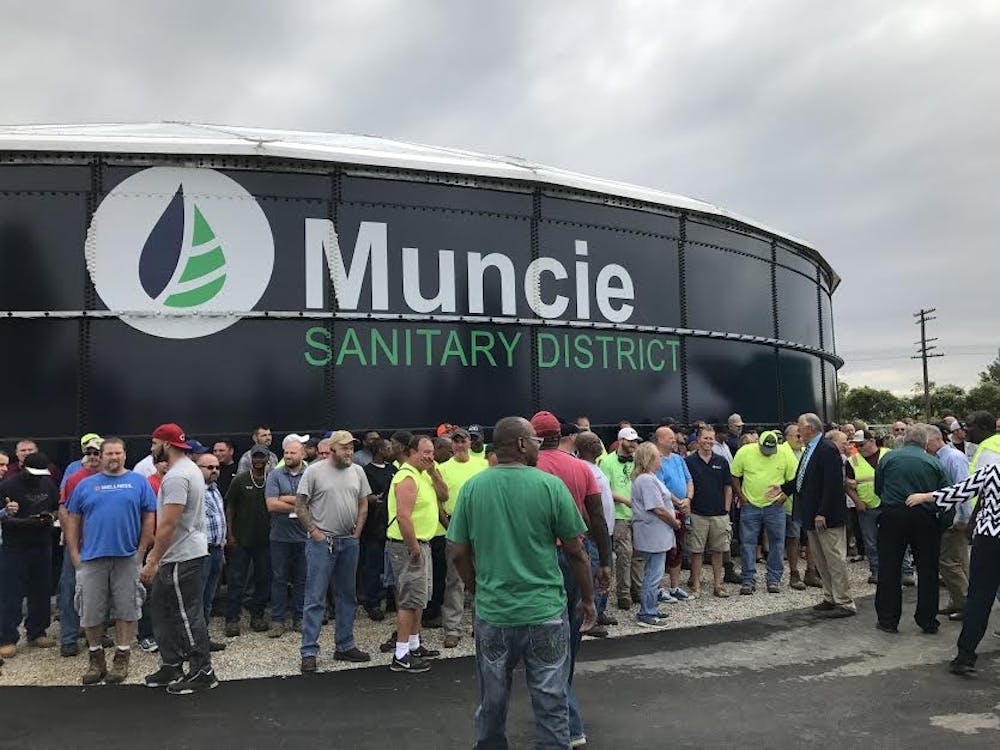Water quality within the Muncie area has always been questioned and contested. Now, the question is, will it get better or worse?
Rick Conrad, the director of the Bureau of Water Quality in the Muncie Sanitary District, said the bureau was created over 45 years ago to help regulate and check up on industrial pollution in the area.
Before the creation of the bureau, industries would tend to contaminate waterways with metals, causing toxic chemicals to make their way into the human body.
Conrad said the problem of heavy metals within the water has been “largely taken care of." Since the creation of the Clean Water Act in 1972, which established the basic structure for regulating pollutant discharges into the waters, heavy metals in the White River are mostly undetected.
The sewage overflow systems were one of the more concerning aspects regarding the quality of surface water in Muncie, Conrad said, because the overflows would allow raw sewage into the White River when it rained. In an effort to alleviate this type of flooding on Madison Street, Muncie recently unveiled a new storm drainage system to the public.
RELATED: Muncie Mayor Dennis Tyler unveils storm drainage system
Conrad said this process can be very expensive despite only having to separate the rain and sewage. Because of this, it will take 16 more years to completely separate storm sewers from sanitary sewers.
“It’s going to take rain water and send it to the river as opposed to sending it to the plant to be treated, because it’s maxing out the plant,” Conrad said.
The biggest concern is e-coli from the combined sewer overflows because it runs a greater risk for coming into human contact.
To make the issue worse, President Trump’s administration has been rolling back the authority of the Environmental Protection Agency, which could include the elimination of the Clean Water Act.
Conrad said changes like these do warrant a concern to water quality; however, no real changes have occurred so far.
“There’s nothing overly concerning that has happened in the first eight to 10 months [of Trump’s presidency],” Conrad said. “Our hope is that having an office like this here, we will not see a big impact or a backwards slide in water quality locally.”
Conrad said, for over 45 years, the Bureau has been testing and sampling water from industries that discharge anything to the treatment plant that the plant can’t remove. This includes anything that is toxic and that might affect plant or river life.
John Barlow has been the superintendent of the water pollution control facility in the Muncie Sanitary District for about 10 years. According to the control facility’s website, it treats wastewater for various pollutants before it is sent to the White River.
“We make sure that every drop of water we put out to the river is fully treated,” Barlow said.
Barlow said they’ve been “consistently modernizing and optimizing” the plant since he began working there 35 years ago, which has allowed the company to see better efficiency.
Some of the sewer systems, Barlow said, especially considering Muncie’s size and age, have issues structurally. However, the structural issues aren’t clearly visible until actual problems start to occur.
The facility has been working on different projects to improve itself, including the use of UV rays to disinfect wastewater before it’s discharged instead of using chlorine gas, which will begin next year.
Barlow said he believes everyone at the plant has a hand in ensuring the White River improves, despite costs for such projects.
“Nobody gives us a day off. It comes in 365 days, 7 days a week, 24 hours a day. We’re doing the job,” Barlow said.
It appears that hard work is paying off. According to a 2016 annual water quality report from the American Water Muncie operations, drinking water quality met the standards of all federal and state requirements.
Last year it was reported that Muncie tap water had not been plagued with lead amid the 24-hour boil order that occurred.
Contact Andrew Harp with comments at adharp@bsu.edu.





